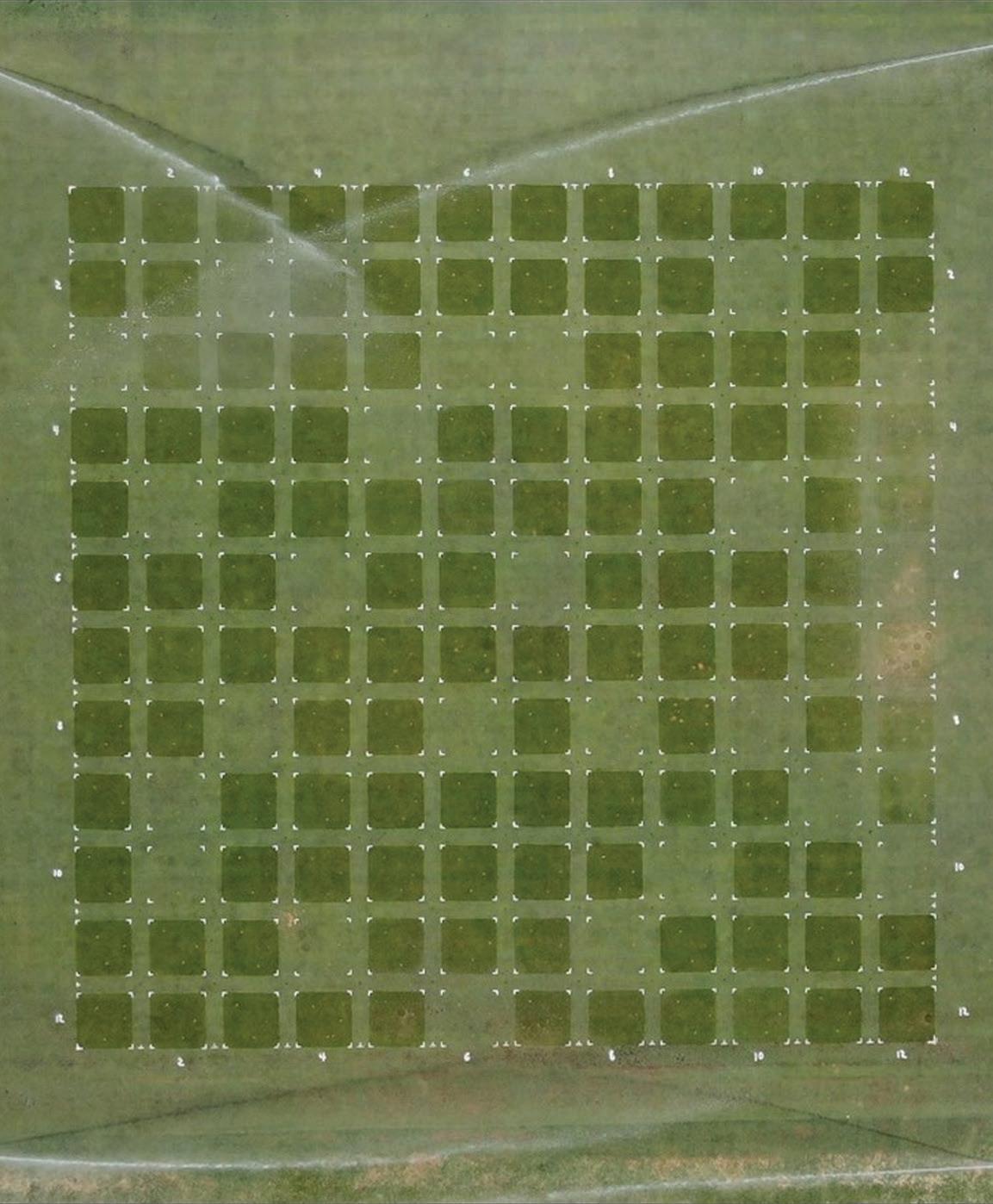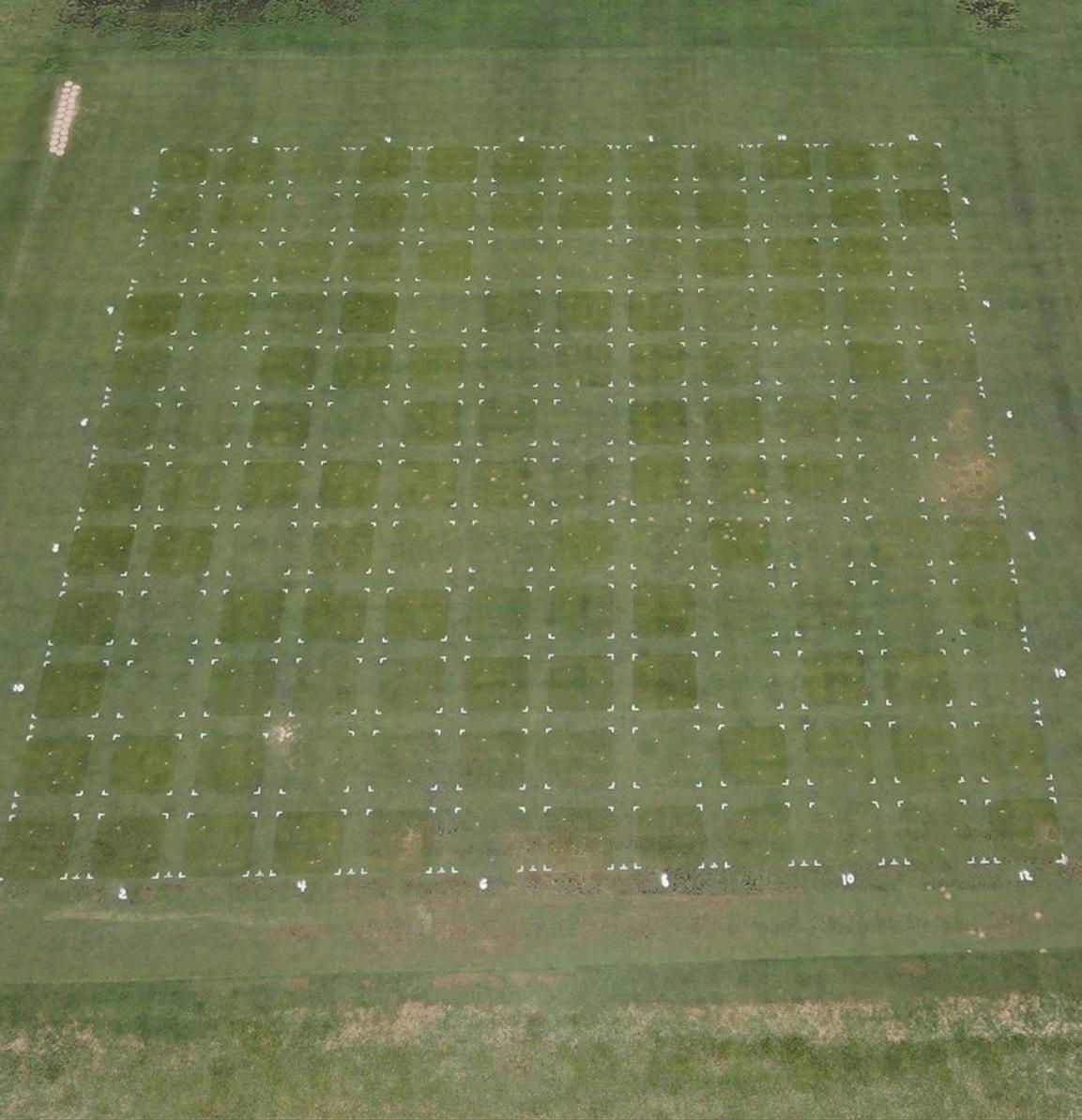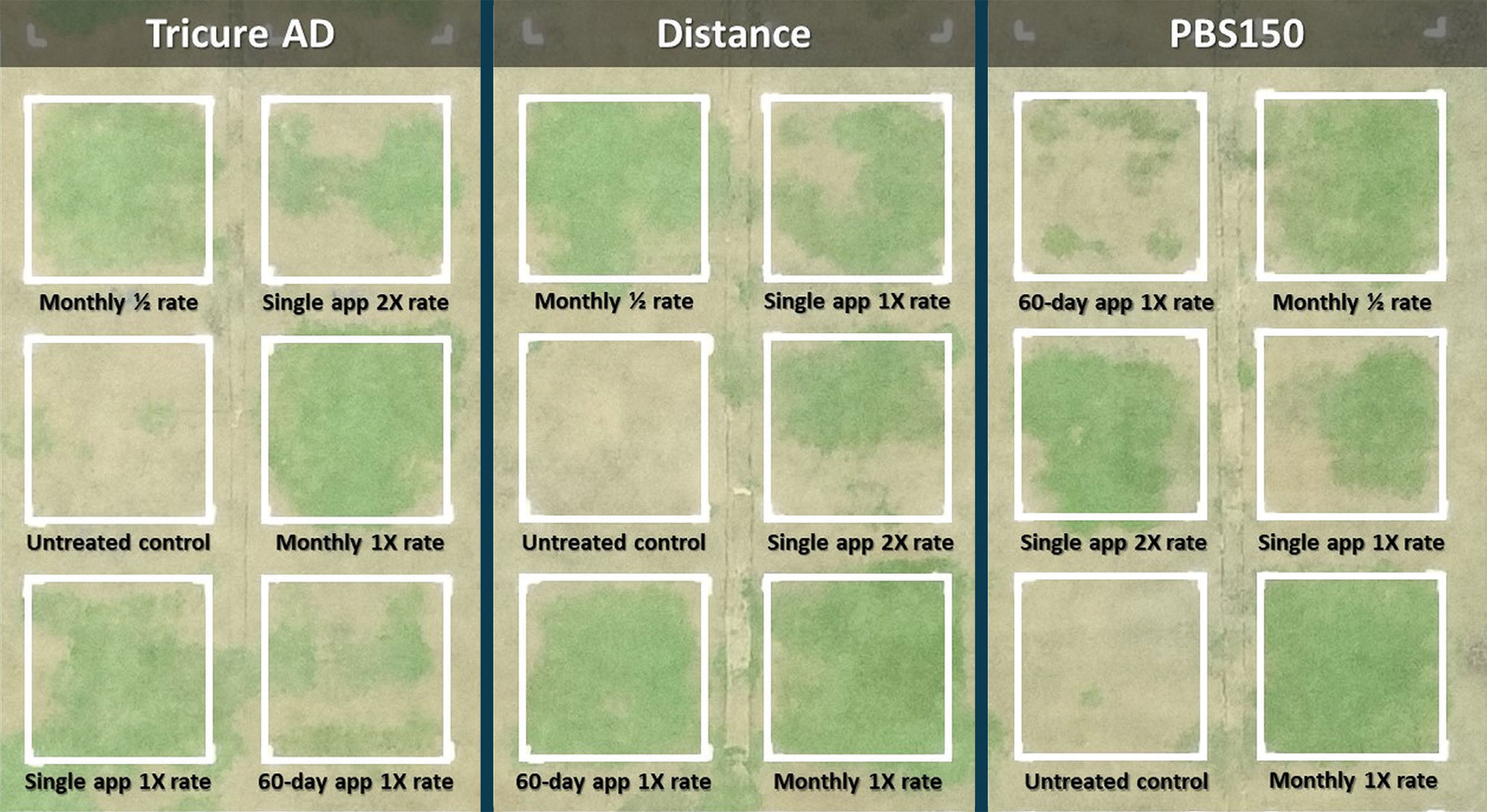
9 minute read
Feature
Maximizing the Benefits of Wetting Agents: New Research at the University of Arkansas
By Daniel O’Brien, Wendell Hutchens Ph.D., Mike Richardson Ph.D.
Advertisement
Atthe risk of stating the obvious, water matters. In an increasingly crowded world, with increasingly strained resources, this is true for all walks of life and turfgrass is no exception. Decisions about how we use, and just as importantly, how we conserve water are major issues for turfgrass professionals, which is why such decisions are also at the heart of our Turfgrass Research Program at the University of Arkansas. Exploring new ways to maximize this most vital resource has been, and continues to be, a top priority in the work we do.
When it comes to managing water, one of the best resources available to turfgrass professionals are wetting agents, also known as soil surfactants. Yet, as powerful and versatile as these products are, the truth is that in many ways, turfgrass research is just scratching the surface in our understanding of them and how they work. While wetting agents are by no means a “silver bullet” for solving all the water issues facing the future of turfgrass, they do hold tremendous potential for a range of moisture related issues, such as: preventing localized dry spot, improving moisture uniformity, increasing water infiltration, prolonging rootzone moisture retention, reducing winter injury, and enhancing the efficacy of fertilizers and pesticides (Abagandura et al., 2021; DeBoer et al., 2020; Hutchens et al., 2020; Jacobs & Barden, 2018).
Building on that existing body of research, we are thrilled that a recent proposal of ours was selected by the Golf Course Superintendents Association of America (GCSAA) Foundation as a recipient of the 2023–2024 Dr. Michael Hurdzan Research Grant Endowment. The Hurdzan Endowment is dedicated to, “funding applied environmental research on golf courses, with the specific goal of reducing requirements for water, fertilizer, pesticides, or fossil fuels in golf course maintenance.” Above all, it is important to us that our research is both novel and practical, offering meaningful benefits to turfgrass professionals. In this case, those turfgrass professionals are golf course superintendents, and the potential benefits include savings, both in terms of water and money.
••••••••••
IMAGE 1 New wetting agent research at the University of Arkansas will compare different wetting agent products, application rates & timings, as well as different technologies for assessing wetting agent performance in sand-based putting greens. Individual plots can be clearly seen from drone images (A) immediately after application, and even more so (B) during post-application irrigation (0.2").

Image 1 A

Image 1 B
••••••••••
Overall Goals
Essentially, this research boils down to the simple question, How do you get the most out of a wetting agent application? At the University of Arkansas, we have been studying wetting agents for over 20 years, but we will be the first to tell you, there are still a lot of unknowns when it comes to these extremely important products. Because wetting agents are not subject to the same registration process or labeling requirements as pesticides, companies do not have to disclose precise active ingredients or extensive amounts of research data in order to begin selling a product. While all of that is beyond a superintendent’s control, what is very much within their control is: which wetting agent to use, how much product to put in the tank, and how often to apply. The overall goal of this research is to investigate wetting agents at the place where superintendents can exercise the most control over product performance. To do that, our original question can be broken down into comparisons on three distinct levels: 1) comparisons among wetting agents, 2) comparison among application rates/timings, and 3) comparisons among technology for evaluating wetting agent performance and longevity.
Research Design & Treatment Details
Starting with comparisons among wetting agent products, we opted to work with six different wetting agents, each from a different manufacturer (Table 1). Admittedly, there are many options available, but in research you seldom have space/time to test everything at once. Our criteria were based largely on conversations with superintendents about wetting agents they were using, along with a desire to include products marketed both for monthly reapplications, as well as those for “long-term” or “season-long” effectiveness from a single application.

Second, comparisons among application rates/timings were based on the fact that when it comes to wetting agent labels, it’s common to see multiple options for application amounts and intervals. While flexibility is inherently a good thing, it does not mean that all options perform the same. When looking at each wetting agent individually, we wanted to evaluate which application rate/interval produced the best turfgrass quality above ground, with the greatest volumetric water content (VWC) in the rootzone.
We applied each of our six wetting agents six different ways (including a nontreated control). To maintain the ability to compare different products, it was important that the six different “application strategies” shared some common features (Table 2). Generally, it can be said that two of the application strategies were season-long applications, two were monthly reapplications, one was a reapplication every two months, and one was zero product applied (nontreated control).

For each individual wetting agent, the specific rates/timings started with what was listed on the product label and when necessary, additional rates were calculated to ensure that each product met the general guidelines for each of the six application strategies. Specifically, the questions we were interested in: with season-long applications, does more product lead to increased performance and/ or longevity? And for repeat applications, can we create cost-savings and still achieve the same level of performance with reduced rates or extended intervals between applications?
Finally, the third comparison was not about wetting agents themselves as much as it was the technology/methods used to evaluate how well they are working. Our research program continues to use portable moisture meters such as the TDR 350 (Spectrum Technologies Inc.) extensively for studying wetting agents. We have also begun incorporating installed wireless moisture sensors such as Turf Guard (The Toro Company) for continuously monitoring VWC (as well as soil temperature and electrical conductivity). Along with both of these devices, we also use an onsite weather station to calculate potential evapotranspiration (ETo) and growing degree days (GDD). Bringing all of these technologies together allows us to ask the underlying question, what is the best way to track wetting agent performance and determine when reapplication is necessary? Ultimately, understanding when and why wetting agents stop working can lead to more informed decision-making about how often (and how much) to apply.

Image 2 Within each plot (3' x 3') volumetric water content will be measured weekly using portable moisture meters at 1.5" and 3.0" (nine measurements per plot at each depth), and continuously using wireless sensors at 1.0" and 6.0" (one sensor per plot in selected plots).

IMAGE 3 Wireless sensors can be installed relatively easily to continuously monitor volumetric water content and help identify the point when wetting agent applications are no longer effective.
Current Status of the Research
The experimental area is located on a block of ‘Tyee’ creeping bentgrass, within a USGA sand-based research putting green in Fayetteville, AR. Initial treatment applications were made on May 10th, 2023, will continue throughout the summer months, with final applications scheduled for Aug. 30th. Data collection which includes TDR measurements (1.5” and 3.0” depths), drone images, firmness measurements, and visual assessments of turfgrass quality and percent localized dry spot, began six days after initial application and will continue weekly through Sept. 7th. Turf Guard wireless sensors were installed to measure VWC at 1” and 6” below the putting surface. So, while it is still early in the 2023 research season, preliminary work conducted in 2022 has shown promising results for separating different application strategies both within and across wetting agents.
If you’re still reading, hopefully that is because something about this research appeals to you. If you are interested in learning more about it, we want everyone to know that the University of Arkansas Turfgrass Field Day will take place Tuesday, August 1st, 2023, at the Milo J. Shult Agricultural Research and Extension Center in Fayetteville, AR. You are all invited, and this research will be featured prominently.
In the meantime, if you would like to talk wetting agents or anything else turfgrass related, please don’t hesitate to reach out. And please remember that this work is made possible by the generous support of the GCSAA Foundation and multiple GCSA Chapters in and around the state of Arkansas.

IMAGE 4 Previous research at the University of Arkansas has observed notable differences in wetting agent performance among various products, as well as among different rates and timings of the same product. The current research will build on previous work with the goal of helping superintendents identify effective combinations of application rate/timing for individual wetting agents. 3 August 2022
This research is made possible by financial support from:
• Golf Course Superintendents Association of America Foundation Dr. Michael Hurdzan Endowment
• The Arkansas Chapter of the Golf Course Superintendents Association of America
• The Mississippi Valley Chapter of the Golf Course Superintendents Association of America
• The North Texas Chapter of the Golf Course Superintendents Association of America
• The Ozark Turf Association Chapter of the Golf Course Superintendents Association of America
Special thanks to our research cooperators:
• AQUA-AID Solutions
• Aquatrols Corporation of America
• J.R. Simplot Company
• Mitchell Products
• Precision Laboratories
• Target Specialty Products
Additional thanks to:
• The University of Arkansas System Division of Agriculture
• Professional Turf Products
Daniel O’Brien is a Ph.D. candidate in the Turfgrass Science Program at the University of Arkansas working under Dr. Mike Richardson • dpo001@uark.edu
Wendel Hutchens Ph.D. is an Assistant Professor of Turfgrass Science in the Horticulture Department at the University of Arkansas • wendellh@uark.edu
Mike Richardson Ph.D. is a Professor of Turfgrass Science in the Horticulture Department at the University of Arkansas mricha@uark.edu
References
Abagandura, G. O., Park, D., Bridges Jr, W. C., & Brown, K. (2021). Soil surfactants applied with 15N labeled urea increases bermudagrass uptake of nitrogen and reduces nitrogen leaching. Journal of Plant Nutrition and Soil Science, 184(3), 378-387.
DeBoer, E.J., Karcher, D.E., McCalla, J.H., Richardson, M. D. (2020). Effect of late-fall wetting agent application on winter survival of ultradwarf bermudagrass putting greens. Crop, Forage and Turfgrass Management, 6(1), 1-7.
Hutchens, W. J., Gannon, T. W., Shew, H. D., Ahmed, K. A., Kerns, J. P. (2020). Journal of Environmental Quality, 49(2), 450-459.
Jacobs, P., & Barden, A. (2018). Factors to consider when developing a wetting agent program: A one-size-fits-all approach to developing a wetting agent program is not possible. USGA Green Section Record, 56(9), 1-6.

